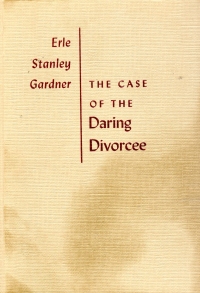 My goodness, has it been ten years since I’ve read a Perry Mason novel? The historical documents on this blog indicate it has (the last beeing The Case of the Mischievous Doll in August 2008). I read four in 2007 and 2008 (The Case of the Mischievous Doll, The Case of the Horrified Heirs, The Case of the Fiery Fingers, and The Case of the Cautious Coquette), but nothing since. I guess that’s because my shelves are not thick with to-read Perry Mason books, and I haven’t seen a lot of them available at local book sales. Come to think of it, I haven’t seen many Walter J. Black edition anything in a while. I guess the generation that bought them up by the score has already downsized, and their kids haven’t held onto them.
My goodness, has it been ten years since I’ve read a Perry Mason novel? The historical documents on this blog indicate it has (the last beeing The Case of the Mischievous Doll in August 2008). I read four in 2007 and 2008 (The Case of the Mischievous Doll, The Case of the Horrified Heirs, The Case of the Fiery Fingers, and The Case of the Cautious Coquette), but nothing since. I guess that’s because my shelves are not thick with to-read Perry Mason books, and I haven’t seen a lot of them available at local book sales. Come to think of it, I haven’t seen many Walter J. Black edition anything in a while. I guess the generation that bought them up by the score has already downsized, and their kids haven’t held onto them.
But I digree–which, to be honest, the digressions are worth more than the book reports themselves. What to say about this entry, apparently the 74th in the Perry Mason line? A young woman desperately seeking his help shows up at Perry Mason’s office, leaves for a moment, but does not return. She did, however, leave her purse which contains a gun that has been fired twice along with her identification. Mason investigates and finds that the woman whose purse it is did not leave it in his office and is being framed for the murder of her estranged husband. Meanwhile, the man’s second wife shows up to claim his property and company, saying that she did not actually follow through on their divorce, so the framed wife was not his wife at all.
It leads to the usual Masonesque legal maneuvering, culminating in a courtroom demasking of the real culprit. Which is rather quick and a bit forced; the real killer and accomplice were bit players until their unmasking, which is ultimately a bit unsatisfying.
Still, one has to admire the lean prose from Gardner’s books. There’s not a lot of description or flourish in it. Most of it keeps the action moving forward. However, I don’t think I could sit down and read a pile of these in order, as the “plot” would be unmasked, dramatically, as “formula.”
Still, these books hold up pretty good and don’t seem dated to people of a certain age.
Especially when Mason rants about prosecutors overcharging:
“If it [a stolen gun] should appear,” Mason said, “that the defendant and this witness conspired to get some evidence from my office, then the taking of the gun would be an overt act which would make him guilty of a separate crime, the crime of criminal conspiracy/ Taking the gun is one thing, conspiring to take it is another. They are both crimes.”
“That’s splitting hairs,” [Prosecuting attorney] Ellis said.
“No, it isn’t,” Mason said. “Whenever you people draw up an information or a complaint against a person you put in just as many counts as you can think of. You put in a count of criminal conspiracy and you put in a count of the criminal act. Then you try to talk a jury into returning a verdict of guilty n every count in the indictment. You claim each count is a separate crime, that you don’t make the law, you only enforce it, that if the legislature has chosen to make it a crime to conspire to commit an unlawful act and a defendant conspires to commit such an act and then does commit the act, he’s guilty of two separate crimes.”
Sixty-four years later, this holds true, and sixty-four more years of “tough on crime” legislators have invented even more crimes to prosecute.



 I have this collection in the Reader’s Digest World’s Best Reading edition, which is a series I pick up when I can find them cheap. They’re nicely put together, they often come with a little biographical pamphlet about the author, and they put the academic material where it belongs–at the end of the book, not ahead of the primary material.
I have this collection in the Reader’s Digest World’s Best Reading edition, which is a series I pick up when I can find them cheap. They’re nicely put together, they often come with a little biographical pamphlet about the author, and they put the academic material where it belongs–at the end of the book, not ahead of the primary material.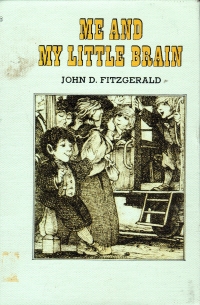 I read the Great Brain books in elementary school, and when I had children, I started picking the volumes up for my boys. Apparently, I picked up two copies of this book as I found a duplicate copy on their bookshelves while helping them clean their room this summer. So I put it on my to-read shelves for nostalgia’s sake.
I read the Great Brain books in elementary school, and when I had children, I started picking the volumes up for my boys. Apparently, I picked up two copies of this book as I found a duplicate copy on their bookshelves while helping them clean their room this summer. So I put it on my to-read shelves for nostalgia’s sake.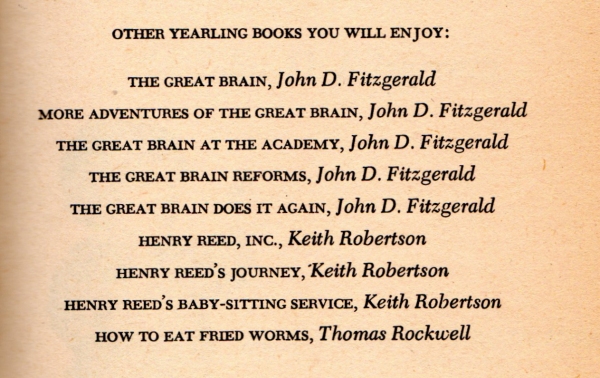
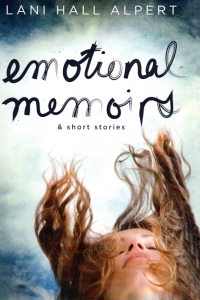 I bought this book after I attended the Herb Alpert / Lani Hall concert
I bought this book after I attended the Herb Alpert / Lani Hall concert  When I cracked open this book, I thought I’d read it before. It begins with a water-infiltration attack on an oil drilling platform. But as I went through the set piece, I thought, No, the other book included an assault on an oil platform in the North Sea, and this one is in the Caspian Sea. Completely different. So it’s like James Bond: Watching the movies rapidly in succession, one realizes how many of the set pieces are repeated, especially ski chases, SCUBA fighting, or the sudden large scale assaults of United States troops, astronauts, or ninja on the enemy compound.
When I cracked open this book, I thought I’d read it before. It begins with a water-infiltration attack on an oil drilling platform. But as I went through the set piece, I thought, No, the other book included an assault on an oil platform in the North Sea, and this one is in the Caspian Sea. Completely different. So it’s like James Bond: Watching the movies rapidly in succession, one realizes how many of the set pieces are repeated, especially ski chases, SCUBA fighting, or the sudden large scale assaults of United States troops, astronauts, or ninja on the enemy compound.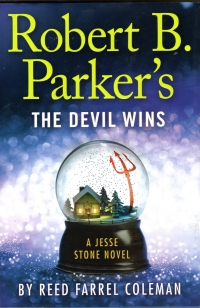 Well, well, well. This was a pleasant surprise. I was not pleased with
Well, well, well. This was a pleasant surprise. I was not pleased with 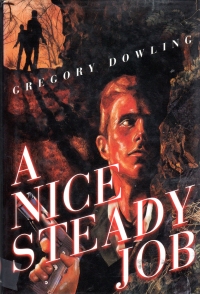 I picked this book from my to-read shelves because, whenever I turned around at my desk to talk to my beautiful wife, the red dot that indicates that it was a dollar book I bought from Hooked on Books once upon a time (probably before this blog existed, werd). I’m very conscious of the red dots these days since the current employees at Hooked on Books
I picked this book from my to-read shelves because, whenever I turned around at my desk to talk to my beautiful wife, the red dot that indicates that it was a dollar book I bought from Hooked on Books once upon a time (probably before this blog existed, werd). I’m very conscious of the red dots these days since the current employees at Hooked on Books 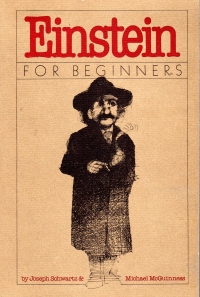 I bought this book in
I bought this book in 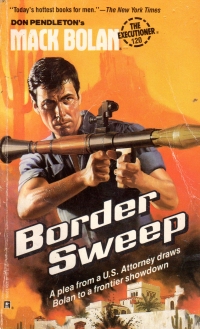 I threatened to pick up the next Executioner novel, and, by golly, I did it. You and I must be punished!
I threatened to pick up the next Executioner novel, and, by golly, I did it. You and I must be punished! Well, after reading
Well, after reading 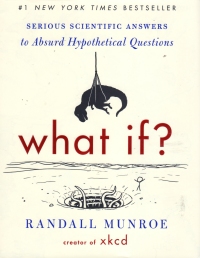 Sweet Christmas, this is the second book in a row that I really enjoyed. I’m wonder if I am not doing the reading-for-pleasure thing correctly this year that I’m so surprised when I really enjoy a book.
Sweet Christmas, this is the second book in a row that I really enjoyed. I’m wonder if I am not doing the reading-for-pleasure thing correctly this year that I’m so surprised when I really enjoy a book. This book has been on my to-read shelf for a while, and I don’t know why. I enjoy Robert Crais’ books more than a lot of the stuff I read. How big of a fan am I? I once spent an afternoon going through microfiche old PDFs of Spider-Man comic books
This book has been on my to-read shelf for a while, and I don’t know why. I enjoy Robert Crais’ books more than a lot of the stuff I read. How big of a fan am I? I once spent an afternoon going through microfiche old PDFs of Spider-Man comic books 
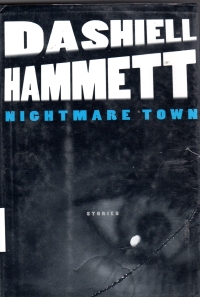 You might think Nightmare Town is New York based on
You might think Nightmare Town is New York based on  I bought this at the Island Book Store on Mackinac Island when I was up there
I bought this at the Island Book Store on Mackinac Island when I was up there 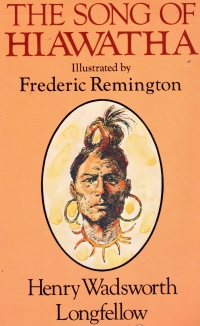 As I mentioned, I recently returned from a trip to Michigan. What are you going to read if you’re going to Michigan? A book set in Michigan which is a series of poems/songs about Native Americans.
As I mentioned, I recently returned from a trip to Michigan. What are you going to read if you’re going to Michigan? A book set in Michigan which is a series of poems/songs about Native Americans. 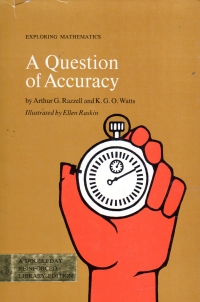 Back in December, I was talking to an engineer, and I said that my FitBit was precise, but not necessarily accurate, when it gave me 250 steps’ credit for sitting on a bar stool and speaking expressively. The engineer was impressed that I knew the difference being that I have an English degree and all. So when I saw this book on the sale cart or in the sale room at Hooked on Books
Back in December, I was talking to an engineer, and I said that my FitBit was precise, but not necessarily accurate, when it gave me 250 steps’ credit for sitting on a bar stool and speaking expressively. The engineer was impressed that I knew the difference being that I have an English degree and all. So when I saw this book on the sale cart or in the sale room at Hooked on Books 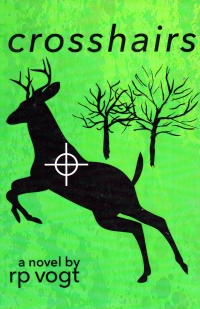 Full disclosure: when I moved from a nice suburb and good school district to the trailer park in the middle of my seventh grade year, “R.P.” was the kid assigned to be my friend to help me get around North Jefferson Middle School in Murphy, Missouri. He was a smart kid. I was a smart kid. I’d like to think we were numbers 1 and 2 in the smarts for our seventh grade class, but I might be giving myself far too much credit. By the time we finished high school, I certainly dropped a couple points in the rankings because I didn’t put any effort into my schooling, and he did. But I digress. We go way back, and when I saw he had a book, I ordered it.
Full disclosure: when I moved from a nice suburb and good school district to the trailer park in the middle of my seventh grade year, “R.P.” was the kid assigned to be my friend to help me get around North Jefferson Middle School in Murphy, Missouri. He was a smart kid. I was a smart kid. I’d like to think we were numbers 1 and 2 in the smarts for our seventh grade class, but I might be giving myself far too much credit. By the time we finished high school, I certainly dropped a couple points in the rankings because I didn’t put any effort into my schooling, and he did. But I digress. We go way back, and when I saw he had a book, I ordered it.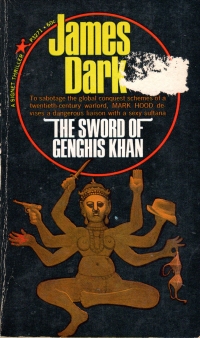 If you only read one Australian spy thriller featuring a Mongolian mad scientist’s plot to take over the world with a metal-melting satellite, this should be it! Of course, I’m not sure where you would be if you wanted to read two such books, as this probably is the only one. But it’s a series book, so you could easily find other things like it to read.
If you only read one Australian spy thriller featuring a Mongolian mad scientist’s plot to take over the world with a metal-melting satellite, this should be it! Of course, I’m not sure where you would be if you wanted to read two such books, as this probably is the only one. But it’s a series book, so you could easily find other things like it to read.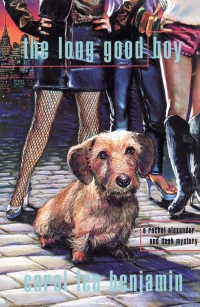 After reading a book about
After reading a book about